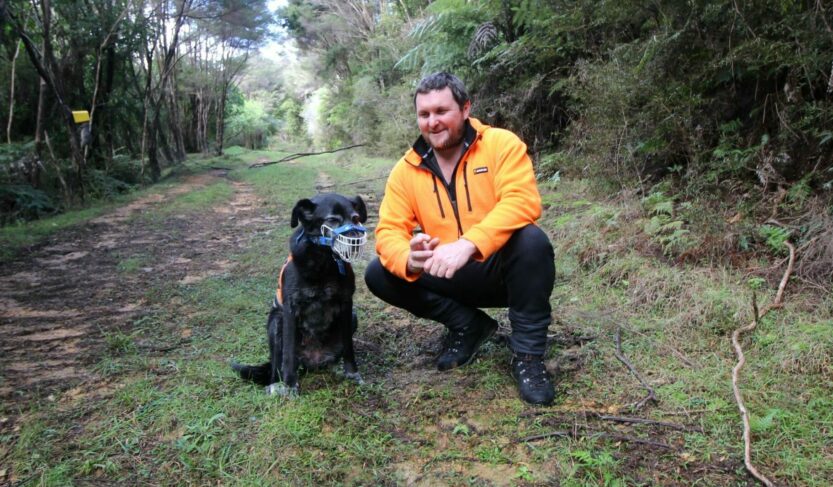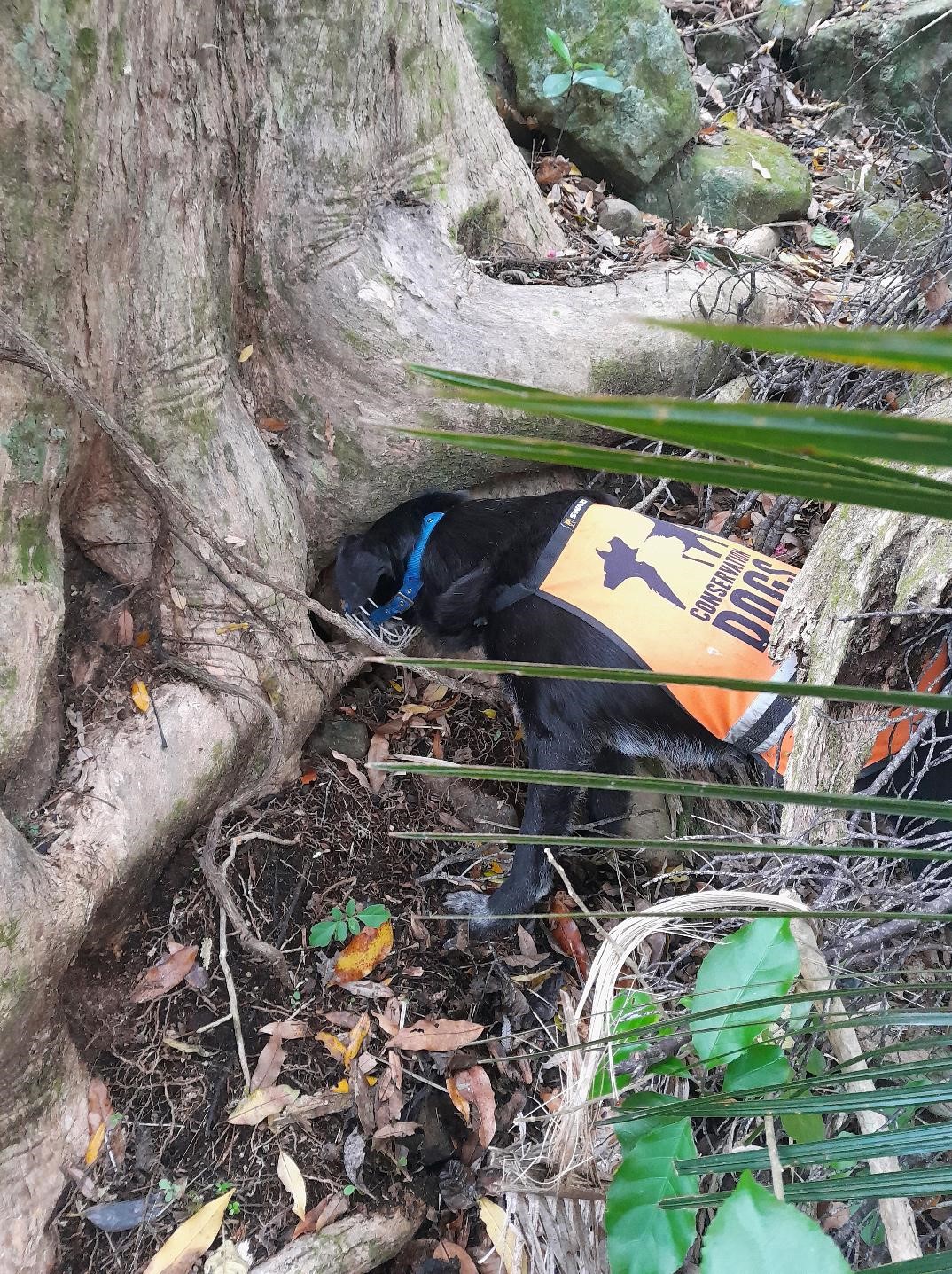Sniffing out the last possums

Meet Cam and Nesha – a conservation dog handler and his certified possum indicator dog.
Nesha is highly trained and specialised to detect possums and they have been working with the Possum Free Whangārei Heads project for the past year. There are only a few possum indicator dogs in New Zealand, so we are lucky to have welcomed them to Northland!
Cam and Nesha are not your ordinary detection dog duo – not only are they focused on possums, but they are also uniquely ‘fit for purpose’. This means extra care and training has been carried out so that they are able to work within a kiwi populated environment like the Whangārei Heads.
In Whangārei Heads, the kiwi population has increased from 80 in 2001 to 1185 in 2024, thanks to the efforts of Backyard Kiwi, Kiwi Coast, and many other local groups. Todd Hamilton, Project Manager for Backyard Kiwi, says it is to the credit of responsible dog owners – “Good dog control by locals is a cornerstone of the kiwi recovery at the Whangarei Heads. With uncontrolled dogs the main threat to adult kiwi, it is a credit to our community that their kiwi population continues to grow and thrive with much of the thanks to responsible dog owners taking the lead.”
Nesha has been intentionally selected and trained from a young age to work in this type of conservation landscape, with the Possum Free project area covering 9,100ha of the Whangārei Heads peninsula.
When duty calls, Nesha puts on her uniform – a bright orange vest and a muzzle – and is ready to go and put her hard-earned skills to work. Their specialty is to use their acutely sensitive nose to sniff out the target species, which are possums for Nesha. Whether it’s scat or scent, Nesha can indicate to Cam that there has been some possum activity.

Nesha can cover a lot of ground and scan the area to see if there are any possums, which saves a lot of time and resources that would otherwise be done via other traps or monitoring tools. A great benefit is that they can tell the team where to best focus efforts.
The accuracy of pest detection dogs allows for a high degree of confidence for monitoring in diverse landscapes. This also means that when a possum is detected, we can respond right away by installing trapping devices or using firearms to carry out an instant dispatch.
If they don’t detect their target species, this can then help build up evidence for the project to get ‘proof of absence’ – which is key for elimination projects to validate the goals have been successfully met.
 Cam and Nesha have been working the past year in the Whangārei Heads, mostly in Bream Head, Ocean Beach, and Taurikura, and Mt Aubrey/Reotahi areas. So far, there has been two confirmed possums, one of which was found near the Bream Head Scenic Reserve, burrowed in a beautiful pūriri tree den. Cam set up a range of tools and with the help from Bream Head Conservation Group intensifying their work in this detected area, it is suspected that this possum was dispatched a few days later in a nearby trap.
Cam and Nesha have been working the past year in the Whangārei Heads, mostly in Bream Head, Ocean Beach, and Taurikura, and Mt Aubrey/Reotahi areas. So far, there has been two confirmed possums, one of which was found near the Bream Head Scenic Reserve, burrowed in a beautiful pūriri tree den. Cam set up a range of tools and with the help from Bream Head Conservation Group intensifying their work in this detected area, it is suspected that this possum was dispatched a few days later in a nearby trap.
The total area covered so far by this duo is 1,100ha and is checked two to three times. The Possum Free project team have been working hard to keep this area clear of possums and respond to any detections.
New Zealand was the first country to use dogs to benefit conservation as early as the 1890s, pioneered by Richard Henry. Conservation dogs have been commonly used to detect taonga species, like kiwi, kākāpo, whio, pāteke, etc. The concept of a predator dog was started in Northland by local legend Scott Theobald, who started using dogs to help him find stoat activity and dens to better target the pest in Trounson Kauri Park. Predator dogs are becoming increasingly important as they are a key tool to help us get to a Predator Free Aotearoa.
22/07/2024